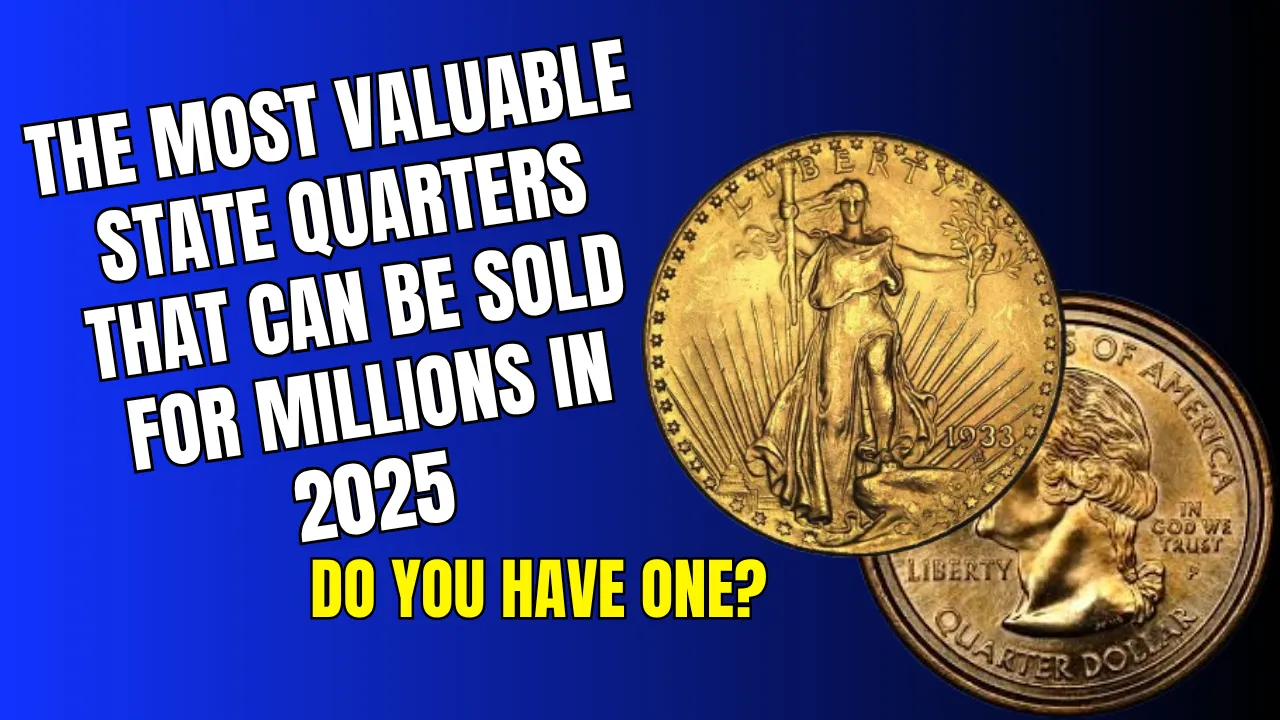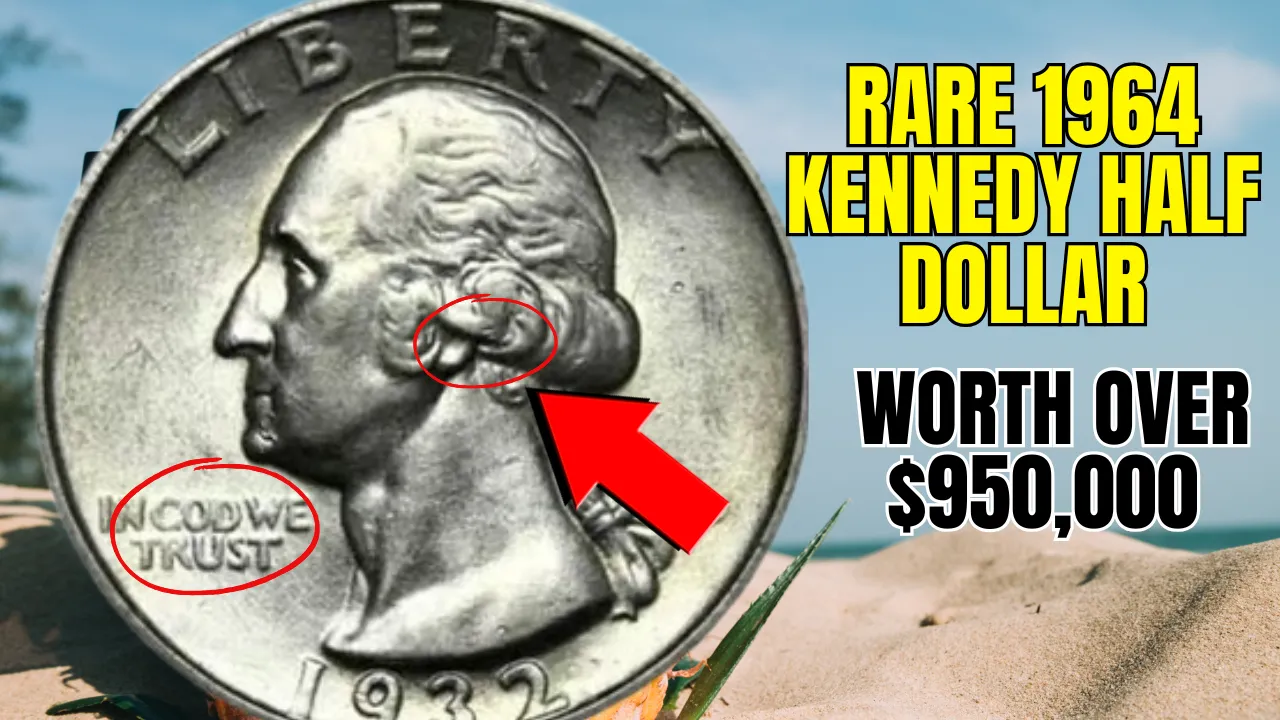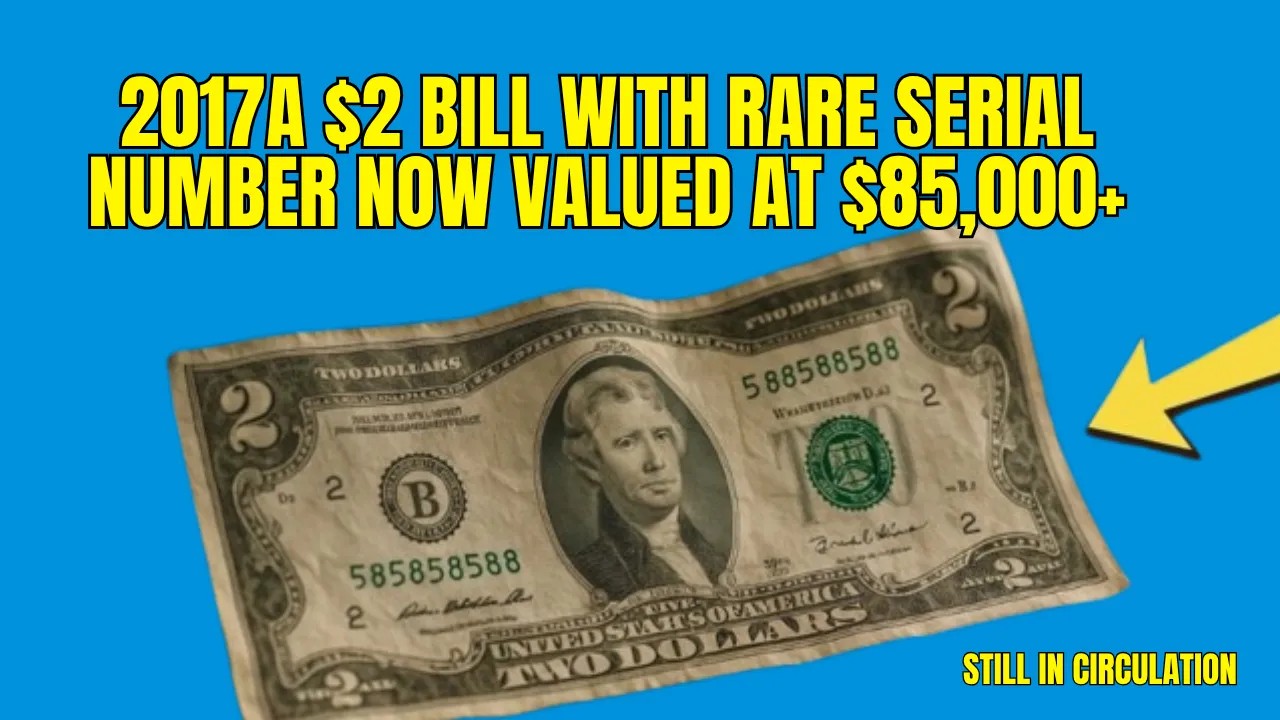Most people think of state quarters as nothing more than pocket change—tokens you might toss into a tip jar or ignore at the bottom of a drawer. But what if one of those coins could be worth thousands, or even millions, of dollars in 2025? That’s the reality for a select few coins from the 50 State Quarters Program that contain rare minting errors, unique finishes, or were part of extremely limited runs. These valuable finds are not myths—they’re real and still out there in circulation.
The Valuable State Quarters 2025 market is hotter than ever, fueled by growing interest in error coins, low-mintage variations, and perfect condition examples. From the famous 2004-D Wisconsin extra leaf quarter to less-known but highly prized 2002 Indiana error coins, these quarters are turning heads at auctions and among collectors. In this article, we break down the top state quarters to watch, what makes them valuable, and how you can check if you own one.
Valuable State Quarters 2025
| Coin | Error/Type | Estimated Value (2025) | Special Feature |
| 2004-D Wisconsin Quarter | Extra Leaf (High & Low) | $6,000 – $12,000+ | Additional leaf on corn husk |
| 1999-P Delaware Quarter | “Spitting Horse” Die Crack | $200 – $1,000+ | Crack from horse’s mouth |
| 2005 Minnesota Quarter | Double Die | $500 – $3,000 | Doubled trees on reverse |
| 1999 Georgia Quarter | Off-Center Strike | $1,500 – $5,000+ | Misaligned image with visible date |
| 2002-P Indiana Quarter | Die Adjustment Strike | $1,000 – $7,500 | Weak or missing design features due to strike pressure |
| Undiscovered Errors (Various) | Speculative Ultra-Rare Varieties | Up to $1,000,000+ | Perfect MS-70 examples or unknown minting errors |
What Makes a State Quarter Valuable?
Not every quarter in your change jar will be worth a fortune, but certain features can drastically raise a coin’s value. The most valuable state quarters 2025 share some key traits:
- Minting errors: Coins with double dies, die cracks, or off-center strikes are highly prized by collectors.
- Low production runs: Quarters with fewer surviving examples are naturally more scarce and valuable.
- Unique appearances: Coins with misprints, extra features, or weak strikes catch the eye of specialists.
- High grade condition: Coins that have been preserved in pristine condition, particularly those graded MS-65 and above, command much higher prices.
- Rising demand: As public awareness grows, coins with these traits are seeing a surge in collector demand.
In 2025, collectors are willing to pay a premium for state quarters that check one or more of these boxes.
The 2004-D Wisconsin Extra Leaf Quarters
This coin is one of the most talked-about in modern U.S. coinage. During the minting process in Denver, an extra leaf mysteriously appeared on some Wisconsin quarters’ corn stalk design. There are two types of these errors:
- Extra Leaf High: The added leaf sits higher on the stalk.
- Extra Leaf Low: The leaf appears in a lower position.
Both are rare, and when in mint condition, they have sold for up to $12,000 at auction. It’s believed the error was the result of an unintentional engraving mistake—making it a fascinating story for collectors and a high-value find.
1999-P Delaware Spitting Horse Quarter
The very first quarter in the state series, the Delaware quarter, became infamous due to a minting defect known as the “spitting horse.” A die crack caused the coin to show a small line projecting from the horse’s mouth, giving the illusion that it’s spitting.
While the error is subtle, it’s now a known variety and sought after by collectors. Depending on the condition, these can be valued anywhere from $200 to over $1,000.
The 2005 Minnesota Double Die Quarter
This quarter became a standout due to multiple versions of the double die error on its reverse. The trees surrounding the lake appear to have been struck twice, producing duplicate outlines.
With over 60 varieties of the error discovered, the value depends on the strength of the doubling and the condition of the coin. High-grade examples continue to sell for $500 to $3,000.
1999 Georgia Quarter with Off-Center Strike
Error coins that are off-center tend to be popular, but their value hinges on how off-centered they are and whether the date remains visible. Some 1999 Georgia quarters were struck significantly off-center—yet retained legible details.
Quarters with 10% or more misalignment and complete dates are especially prized. In mint state, they can fetch between $1,500 and $5,000 or more.
2002-P Indiana Quarter with Die Adjustment Strike
Less discussed but rapidly gaining recognition is the 2002 Indiana quarter that shows signs of a die adjustment strike. During the minting process, the striking pressure was too low, causing parts of the design to appear faint or missing entirely.
These coins are difficult to find in pristine condition. However, when they do appear, their uniqueness commands values of $1,000 to $7,500 in 2025’s market.
Could There Be a $1 Million Quarter?
In the world of numismatics, surprises are always possible. Some collectors and auction houses speculate that an undiscovered state quarter error, especially one graded a flawless MS-70, could someday break the million-dollar mark. Whether it’s a perfect strike or a previously undocumented minting anomaly, the potential exists. That’s why collectors still sift through rolls, hoping for the next big discovery.
How to Check If You Have a Rare Quarter
Want to know if your pocket change includes a hidden gem? Follow these steps:
- Examine the coin carefully using a magnifying glass or loupe.
- Look for errors like doubling, cracks, off-center images, or missing details.
- Check the mint mark – P (Philadelphia), D (Denver), and sometimes S (San Francisco).
- Compare it to verified photos of rare state quarters from reliable sources like PCGS or NGC.
- Send the coin for professional grading if it appears to be an error or in excellent condition.
Grading services such as PCGS and NGC can certify and encapsulate your coin, preserving its condition and establishing its authenticity.
Final Thoughts
State quarters may not seem like a path to riches, but a select few hold incredible value in today’s collector market. The valuable state quarters 2025 trend proves that everyday change can hide treasures worth thousands—or even more. From the iconic 2004-D Wisconsin Extra Leaf to the double die Minnesota design, these coins are in demand and being hunted nationwide.
So next time you grab change at the store or clean out your old coin jar, take a moment to check. You never know—your next quarter might be the one collectors are dreaming of.
FAQs
1. What is the rarest state quarter to look out for in 2025?
The 2004-D Wisconsin Extra Leaf quarter is one of the rarest and most valuable, especially in mint condition.
2. How can I tell if I have an error coin?
Look for doubling, cracks, off-center images, or missing details using a magnifying glass, and compare it with known varieties.
3. Should I clean my coin before sending it for grading?
No. Cleaning can damage the coin and lower its value. Always send it in as found.
4. Where can I get a coin professionally graded?
You can submit your coin to major services like PCGS (Professional Coin Grading Service) or NGC (Numismatic Guaranty Company).
5. Can a modern quarter really be worth a million dollars?
While speculative, experts believe an undiscovered, high-grade state quarter with a unique error could eventually reach seven figures.
Call to Action
Got change lying around? Don’t ignore it—check your quarters. A rare state coin could be sitting unnoticed in your pocket or drawer. Share this article with fellow collectors, friends, or family. You might just help someone discover a small fortune hiding in plain sight.











